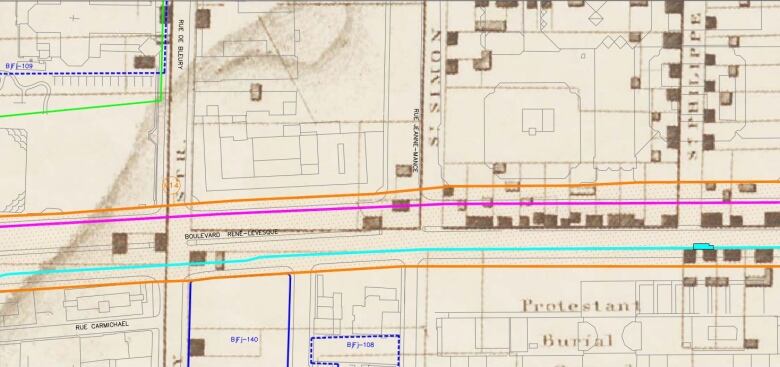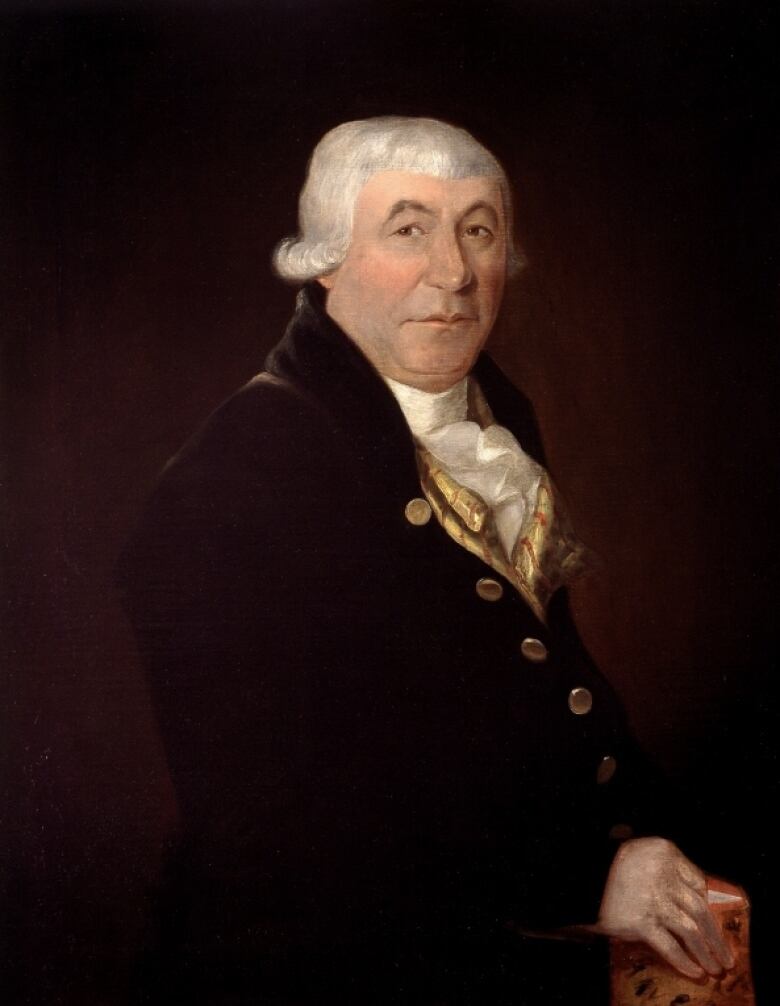Burial ground under Ren-Lvesque Boulevard shines light on Scottish Montreal
'We knew it was there, but it reminds you that the past isn't that far away': McCord Museum expert

A 19th-century burial ground uncovered during construction on Ren-Lvesque Boulevard has revived interest in the long and colourful history of Montreal's Scottish community.
Hydro-Qubecworkers installing a new electrical line recently found roughly 40 skeletons at the site of the old cemetery.
"We knew it was there, but it reminds you that the past isn't that far away," saidHeatherMcNabb, who works at Montreal'sMcCordMuseum and wrote her master'sthesis on Montreal's Scottish community in the19thcentury.
CemeteryonRen-Lvesqueopens 'small window' into Montreal history

Searching for clues
The cemetery, situated betweenwhat is nowJeanne-Manceand St-Urbain Streets,was in use between1799 and the middle of the19thcentury.
It was reserved forcivilians and military personnelofProtestant faith, though it's not clear whether the skeletons found belonged to people of Scottish origin.
English or Irish Protestants may also have been laid to rest at the site.
In 1854, when the cemetery was turned into a park,families were given the option of relocating the remains of their loved ones to the cemetery on Mount Royal. But not everyone followed suit, perhaps because they couldn't afford to.

At least one prominent Scot,JamesMcGill, the founder of McGill University,was among those laid to rest at the cemetery.
His remains were later moved to the front of McGill's iconicArts Building.
Thebones found this summerhave been excavated, anda team of archeologists commissioned by Hydro-Qubec is hoping they yield clues about who was buried there.
Scotland's contribution
In 1861, there were3,235 people ofScottish origin, 4,294 of English originand4,469 of Irish origin in Montreal, according to a city census.
Despite being relatively small in number, Montreal's Scotsheld sway over many of the key industries as the city grew into an economic force in the 19thcentury.

"Generation after generation, Scots were the single most powerfulgroup in the Montreal business community,which meant they were the most powerful in Canada," Donald MacKaywrotein his history of Scottish Montreal, The Square Mile: Merchant Princes of Montreal,in a passage cited byMcNabb in her thesis.
ButMcNabbsaid the contribution of Scottish immigrants to the city is more complex than that.
"The research I did for my thesis pointed out that the majority of Scottish immigrants to Montreal were not the few famous, 'rags-to-riches'immigrants that are often featured in the stories of the influence of the Scottish community in Montreal," she wrote in an email.
"Montreal's Scottish immigrant community was made up of a great number of people working in modest occupations (such as a clerk or a cabinetmaker)."
It's likely those were the Scotsburied in the cemetery, which at the time was located in a suburb of Montreal, a long walk or carriage ride from the city centre, she said.

A new place of rest
Once the archeologicaltests are complete, theSt.Andrew's Society, a groupdedicated to Montreal's Scottish history andculture, has offered to bury the skeletons inempty plotson Mount Royal.
The group's president, BrianMacKenzie,said the plots werepurchased "throughout the years to help folks who needed a final resting place."
Hydro-Qubechas said it will provide more details on its findings in the coming months.
Members of the St. Andrew's Societyquickly began shooting emailsback and forth after Hydro announced its discovery, he said, excited to learn more about the people who were buried there.
"It's just interesting to tie it all together," MacKenziesaid.












_(720p).jpg)


 OFFICIAL HD MUSIC VIDEO.jpg)
.jpg)



























































































